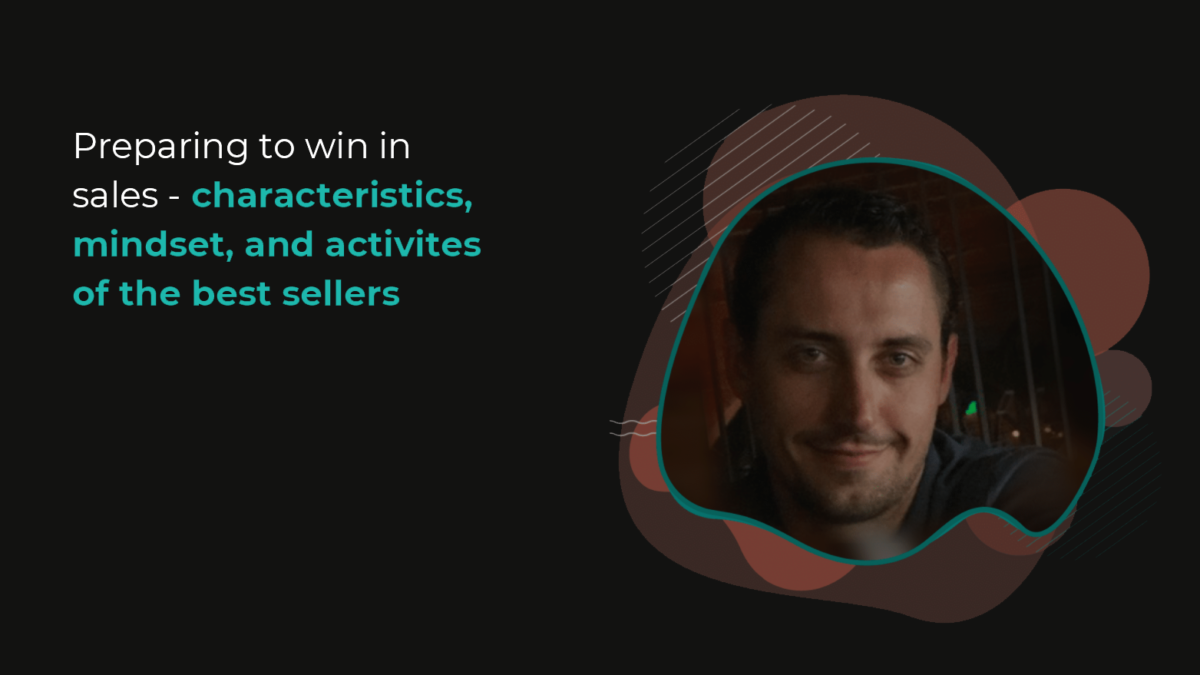Why I Use Vitamins and Painkillers When Selling
It’s more common for people to buy and consume painkillers when they are sick compared to purchasing and consuming vitamins on a day-to-day basis to keep healthy. It’s also easier to forget to drink your vitamins because the effects are not immediate and serve you longer. On the other hand, painkillers are usually taken when needed, and consumption is generally urgent, such as managing allergic reactions or easing severe pains. One serves as a precaution, the other as a remedy, but both of them are important.
An age-old question in venture capital is, “are you selling vitamins or painkillers?”
Venture capitalists love investing in painkillers because the reality is, people are ready to pay a premium to address urgency, such as pain, compared to the longer-term benefits of vitamins.
As a salesperson, I can’t let one or the other dictate if I should only be pitching to a healthy company or a business with existing challenges because there are opportunities to tackle both. This can be applied when I use the vitamins and painkillers sales tool to make my messaging crisp and tight to communicate better how I can help a customer.
What is the vitamins and painkillers sales tool
The vitamins and painkillers sales tool uses both the long-term benefits of vitamins and easing the pain using painkillers. Business owners want to reap benefits that can help them for a long time, such as buying pricier equipment for more durability long-term or sending delegates to training to bring back business learning. On the other hand, the same as you would take painkillers to manage your stomachache, a business will move faster and will be willing to spend more to handle issues and other urgent tasks, such as a PR crisis or fixing critical machinery in a manufacturing process.
This tool includes four key steps: anticipating the question, identifying the problem, need, and value, capturing the pain and gain statements, and enumerating progress made and pain eliminated.
1. Anticipate questions
One of the most basic tactics in information gathering is the Five Ws and H framework. It consists of What, Who, Why, When, Where, and How, and helps me collect key information. Using this framework in sales allows me to tighten the message and help me close a deal because I clearly understand the goals I set.
Below is a set of five Ws and H questions and some guide questions I use to craft my answers. These are questions that are expected to be asked by any new prospect you may have. The key is to prepare the answers and keep them short and concise, as a phrase or a sentence. Otherwise, instead of tightening the message, you may end up confusing yourself and the potential client because of too many points you want to get across.
- What are you selling?
What are the primary products or services am I selling to the prospect? Is there any specific one I want to hero? This may be a basic question, but it creates clarity in my intentions and goals. There may also be a wide range of products and services that may not be directly related to each other. Each product and service will have a different target market and messaging, and identifying which one to focus on is important to tighten your message. - Who is it for?
Who am I targeting? What is their profile? Are they CXOs of a major firm? IT pros? Small and medium business owners? The way I communicate with each will be different, so it is important that this is clear. For example, IT professionals will be more focused on the technical aspect, while business decision-makers may be more responsive to possible effects on employee efficiency and cost savings. - How does it work?
How will I get the job done? Do they avail of my services to make their team more productive? Do they purchase my tool to bring in more leads? Do they hire me to standardize the process? - Why does it matter?
Why do my product or service matter to my target client and their business? Why do they need to purchase my product or hire me for my services? Why should they buy from me or hire me instead of someone else? - When and where does it pay off?
When and where will they see the impact of your products or services? Where will this value show? Is it short-term or long-term? Is it immediate or needs a few years to ROI? Is it tangible? Will it show when they compare the baselines to the results?
2. Identify the problem, need, and value for their business
Every business has someone looking into how to make everything better— faster processes, more productive employees, higher savings, and so on. But if you can help them see these challenges and how you can help them, they would know that you did your research and are prepared to offer solutions. There’s also the benefit of being an outsider looking in because you provide fresh perspective.
- Identify a discreet problem that your customer is facing
Clearly showing customers gaps that they might not have noticed immediately sparks an interest. These may be issues that are within the fine print of what they do, or what they may think is unimportant. - Identify the need that the problem is creating
If I can provide the needs that these problems are creating, I show them the impact of the issue on their business. Giving them this information allows me to show actionable steps that I can help them with when they hire me. - Identify the value to your customer when the problem is eliminated
Once I identify the value when the problem is eliminated, I gain a better understanding of the concerns. It also shows that the need I presented will yield good results.
I then list each problem I can solve, the associated need, and the value accrued in a simple table to quickly summarize and lay out what I can do for the client. For example:
| Problem | Need | Value |
| Slow site speed | Optimize image and video file sizes and revisit hosting with better allocation | Lower bounce rates |
| Low quality leads | Better targeting of ads | Better leads that have higher potential to convert |
3. Capture the from-to statements
The pain (from) and gain (to) statements are key details that I create to clearly enumerate the challenge and the intended result for each. Take the table you created in the previous step and enumerate the pains you are helping the customer alleviate and the gains you are helping them make against the challenges they are facing. For example:
| Pain statements | Gain statements |
| Slow site speed increases bounce rate and affect lead generation | Faster site retains interest that gives opportunity to connect with leads |
| Low quality leads increases cost per acquisition with no benefit | Better targeting of ads and filtration maximizes costs spent |
4. State progress made and pain eliminated
When you help people make progress, you help increase positive results. On the other hand, when you help people eliminate pain, you decrease negative outcomes. This is the time I narrow my messaging by clearly stating the progress made and the pain eliminated. For example:
| Progress made | Pain eliminated |
| Increase in qualified leads and revenue | Decrease losses and stress |
| Increase confidence | Decrease uncertainty and fear |
In conclusion
The vitamins and painkillers sales tool enable me to develop several ways in talking about impact, to be clearer and more concise, yet targeted in my messaging for faster and more effective results for my client and I.
Sounds interesting? Let’s talk about how we can put these tools into action for your business.
About Jeev
A serial entrepreneur with a rich history of launching disruptive online businesses and taking them to the top, Jeev owns dozens of “go-to” reviews and rankings websites. Jeev has invested more than 20 years researching human behavior and how to leverage different sales methodologies to effectively influence decision-makers.To find out how Jeev can help you, visit jeevtrika.com.








